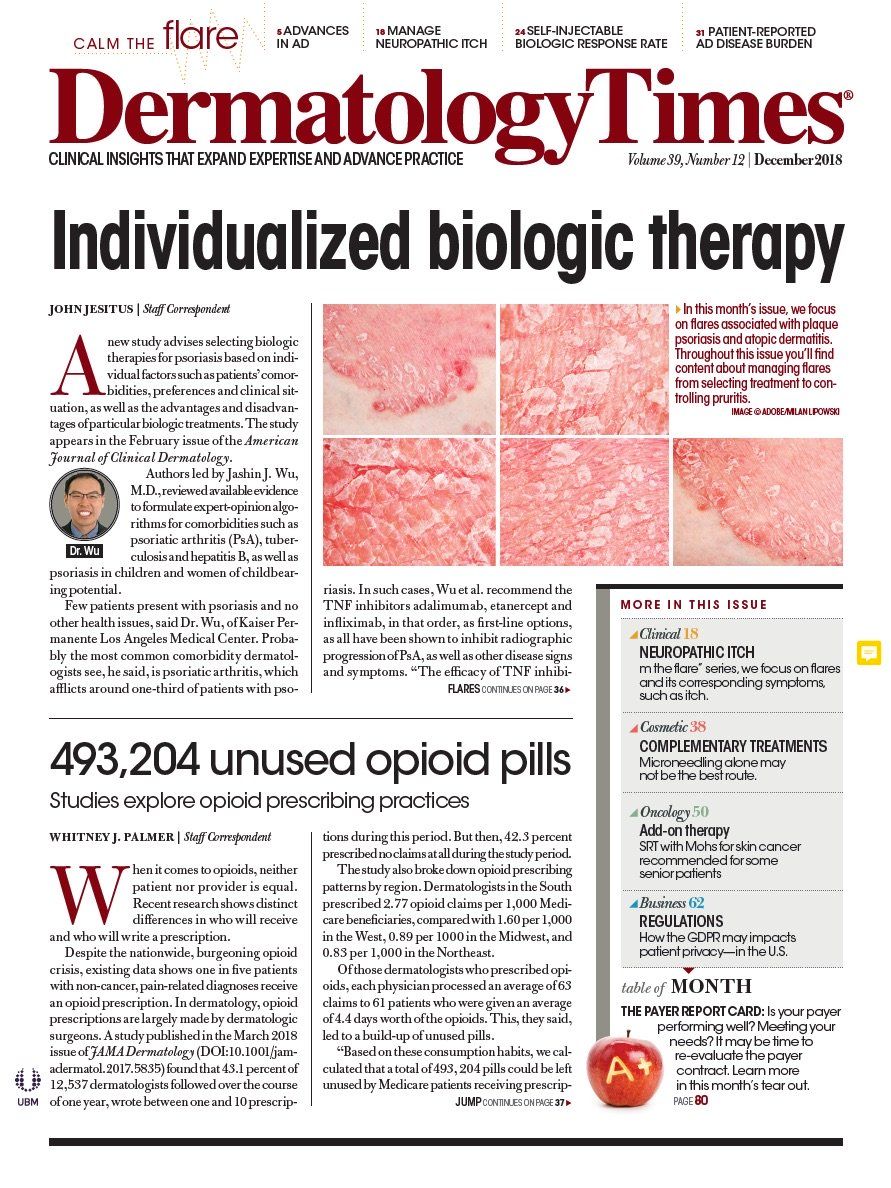- Case-Based Roundtable
- General Dermatology
- Eczema
- Chronic Hand Eczema
- Alopecia
- Aesthetics
- Vitiligo
- COVID-19
- Actinic Keratosis
- Precision Medicine and Biologics
- Rare Disease
- Wound Care
- Rosacea
- Psoriasis
- Psoriatic Arthritis
- Atopic Dermatitis
- Melasma
- NP and PA
- Skin Cancer
- Hidradenitis Suppurativa
- Drug Watch
- Pigmentary Disorders
- Acne
- Pediatric Dermatology
- Practice Management
- Prurigo Nodularis
- Buy-and-Bill
Publication
Article
Dermatology Times
Cosmetic efficacy testing
Author(s):
Are cosmetics really tested for efficacy? If so, how are they tested? Dr. Zoe Diana Draelos answers these questions in this month's Cosmetic Conundrums column.
Are cosmetics really tested for efficacy? If so, how are they tested? Dr. Zoe Diana Draelos answers these questions in this month's Cosmetic Conundrums column.

Dr. Zoe Diana Draelos

Are cosmetics really tested for efficacy?
I have been asked many times to write a book chapter or review article on cosmetics citing evidence and rating the evidence for validity and scientific relevance. One such request involved making a list of all the facial moisturizers and then providing the evidence for their efficacy. While I tried very hard to comply with these wishes, the final result did not contain the evidence desired. Why?
There is a lot of excellent testing done in the cosmetics industry, especially by ingredient suppliers who want their new product to be widely used in finished formulations. However, I would say that extensive cosmetic testing is limited by concerns that evidence to support cosmetic efficacy could turn the product into a drug. Remember that the Cosmetics & Toiletries Act was written when the skin was thought to be an inert covering over the body. We now know that the skin is immunologically, metabolically, and biologically active. As a matter of fact, it may be one of the most complex structures of the body! So, to provide evidence of cosmetic efficacy, akin to the drug evidence that we are familiar with reviewing, would indeed make the cosmetic a drug. Until the law is updated to allow cosmetics to function beyond scenting and adorning the skin, scientific evidence to document cosmetic efficacy will be lacking. However, there are some widely used standard testing methodologies that are worth examining.
How are cleansers tested in humans?
Cleansers are challenging to test! Next month we will discuss in vitro testing, but I will discuss the most common in vivo cleanser testing technique next. The most commonly used in vivo test for cleanser mildness is the forearm controlled application technique (FCAT) developed by Keith Ertel while at Procter & Gamble, however each company has adapted the test to fit their own internal requirements. This test enrolls human subjects who wet their forearms with warm tap water. A moistened towel is then rubbed in a circular motion over the test bar cleanser for 6 seconds to generate lather. The lathered towel is then rubbed on the forearm skin in a circular motion for 10 seconds. The lather remains on the application site for 90 seconds and then is rinsed with warm tap water for 15 seconds. The arm is patted dry. The washes are performed twice daily for 5 days separated by a minimum of 3 hours.
This test controls the amount of cleanser applied, the length of cleansing, and the frequency of testing. It is an exaggerated use test since the cleansing is performed twice daily for a test period of 5 days. If no irritation is observed with the cleanser under exaggerated use conditions, it is felt to be safe to put the cleanser into the clinic under normal use conditions. This same philosophy is used widely in cosmetic testing.
How are moisturizers tested in humans?
Moisturizer testing is different than cleanser testing because cleansers are assumed to be irritants, but moisturizers are not. The most important attribute to elucidate regarding moisturizer formulations is the duration of the desired effect. For this reason, moisturizers are tested in humans using a regression technique. A panel of individuals with the skin characteristics of the anticipated use population is recruited. The subjects are asked to use the moisturizer on the desired area following the labeled use instructions. Subjects are asked to come back to the research center after 1 and 2 weeks of use for visual dermatology grading, subject tolerability assessment, and corneometer testing. The corneometer measures the amount of water in the skin by looking at the skin conductivity of a low voltage current. Since water is the conductor in the skin, increased skin water will be reflected in an increased corneometry reading. A successful moisturizer will demonstrate improvement visible to the dermatologist, no tolerability issues, excellent subject reviews, and increasing corneometry measurements with continued use.
The subjects are then asked to discontinue the moisturizer and return to the research center at a specified time. This is known as the regression portion of the study. Depending on the type of claim being supported, subjects may return at 48 hours, 3 days, 5 days, or 7 days. Subjects must keep their cleanser unchanged for the entire duration of the study. The length of time after discontinuation that the moisturizer benefits can be perceived is directly correlated to the efficacy of the moisturizer. Regression testing of this type is commonly performed on body moisturizers.






